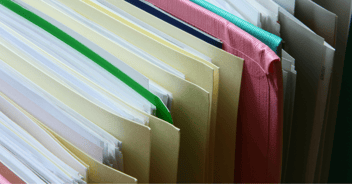.jpg)
Selecting a print company for a school is a crucial decision. By focusing on these key areas, you can ensure that you get a printer lease agreement that suits your needs, stays within your budget, and enables your school to function smoothly.
Here's a 11-point checklist to get you started:
1. Lease Terms
Every leasing agreement has a duration. Enquire about the length of the lease agreement and whether there are any penalties for terminating the agreement before the contract end date. This is important because print technology evolves rapidly and you might want to upgrade to a more efficient model sooner than expected.
At Eco Printers, you’re not tied into a minimum term. We’re so confident in our solution and service, that we put our money where our mouth is which is why all of our schools are on rolling 30 day arrangements. If you’re not happy, you can move to another supplier at any time.
2. Maintenance and Support
Your leased printer is going to require routine maintenance and maybe even unexpected repairs over time. It is essential to understand if your lease includes regular maintenance, repair services, and technical support. Enquire about response times - downtime on a school printer can significantly disrupt day-to-day operations and result in some very frustrated teachers! A day can feel like a lifetime if your main school printer is out of action. If these services are not included, you should budget for them separately.
.jpg?width=1200&height=628&name=Untitled%20design%20(12).jpg)
3. Replacement Policy
Despite regular maintenance, machines can occasionally fail. Large, print copier combos have hundreds of moving mechanical parts. Does the lease agreement cover the replacement of a printer that consistently malfunctions or will you have to see out the remaining term of the contract?
4. Training
Printers come packed with their own software and systems, becoming more complex every year. The brochure may say you can optimise and customise the printing process, but unless you know how to use the software, these features may go unused.
Does the company provide training or support to use their printers effectively? Is this part of the agreement or does it cost extra?
5. Total Costs
Pretty much every school I meet tells me that their printing costs are exceeding what they imagined they were going to pay. This is because some suppliers make the total cost of the agreement unclear, leaving schools surprised (and angry) when they have to pay extra for going over print limits or using more ink than estimated.
Get an upfront and clear understanding of the total cost of any lease agreement. This should include the lease payments, any additional service or maintenance fees, potential penalty fees, and costs for overages if you exceed your agreed-upon print volume. Knowing these costs upfront helps to prevent budget overruns.
At EcoPrinters we like to keep things simple. That’s why we offer unlimited full colour printing for a fixed annual price. No surprises involved.
6. Upgrade Policy
Print technology is constantly evolving and what is considered state-of-the-art today may be obsolete in a few years. A good leasing company should offer an upgrade path for their equipment. Ask about their policy on upgrading to newer models during the lease term.
-1.png?width=819&height=410&name=Untitled%20design%20(3)-1.png)
7. Print Volume and Flexibility
Schools have fluctuating print volumes, with more printing required during term times and less during holidays. Therefore, it's beneficial to choose a lease agreement that accommodates these changes, rather than paying the same amount every term or for the year.
Also be aware of how the print volume is calculated. If you’re subject to a printing limit, does an unused amount rollover to the next month or is it a strict limit that resets monthly?
8. Sustainability
Printers can consume a significant amount of energy, and discarded ink or toner cartridges can harm the environment if not disposed of correctly. Therefore, it's worth asking if the printer model has any green certifications, such as Energy Star, which indicates it uses less energy. Also, inquire about the company's policy for disposing of or recycling ink and toner cartridges.
.jpg?width=1200&height=628&name=Untitled%20design%20(4).jpg)
9. Type and Suitability of Equipment
Not all printers are created equal. It's important to get a printer that can handle your school's demands in terms of speed, print quality, and reliability.
Don't be swayed by fancy features that you won't use. Autostapling might sound useful today, but how frequently are you actually going to use it?
It’s also important to be careful of overdoing it. Those bulky copier / scanner combos that sit in nearly every primary school office are a prime example. Those machines are built for corporate businesses, not rural primary schools. Instead, focus on getting a machine that does what you need it to do efficiently and effectively. This can be a major cost saving.
10. Eco Credentials
You may (we hope) want to evaluate the eco credentials of both the printer models and the supplier company. In terms of printers, models that are energy-efficient or have energy-saving modes can significantly reduce energy usage, contributing to a smaller carbon footprint. Heat-free print technology is the latest breakthrough, and will reduce energy usage by up to 87%.
The print supplier's approach to sustainability should also be considered. Do they offer recycling programs for used cartridges? Do they take back old equipment at the end of the lease term for responsible disposal or recycling? Do they have any policies or initiatives to offset their carbon emissions?
11. References
Finally, you want to make sure you're working with a reputable print company. Ask them to provide references from other schools or similar institutions they've leased equipment to. This will allow you to gauge their experience and reliability, and give you a clearer picture of what you can expect from their service.
-1.png?width=1024&height=512&name=Untitled%20design%20(5)-1.png)
In conclusion, choosing a print supplier for your school is no small decision. With the ever-changing landscape of print technology and the increasing importance of sustainability, it's crucial to be well-prepared when entering these discussions.
By asking the right questions you'll find the best supplier for your school's needs and budget.
With this checklist, you're now equipped to navigate the conversation with potential print suppliers and secure a deal that's best for your school's printing needs.
Happy negotiating and here's to efficient, cost-effective, and eco-friendly printing in your school! If you'd like to find out more about why more than 100 schools have moved to Eco Printers, get in touch with us and we'll be happy to tell you more.




.jpg?width=352&name=Untitled%20design%20(20).jpg)